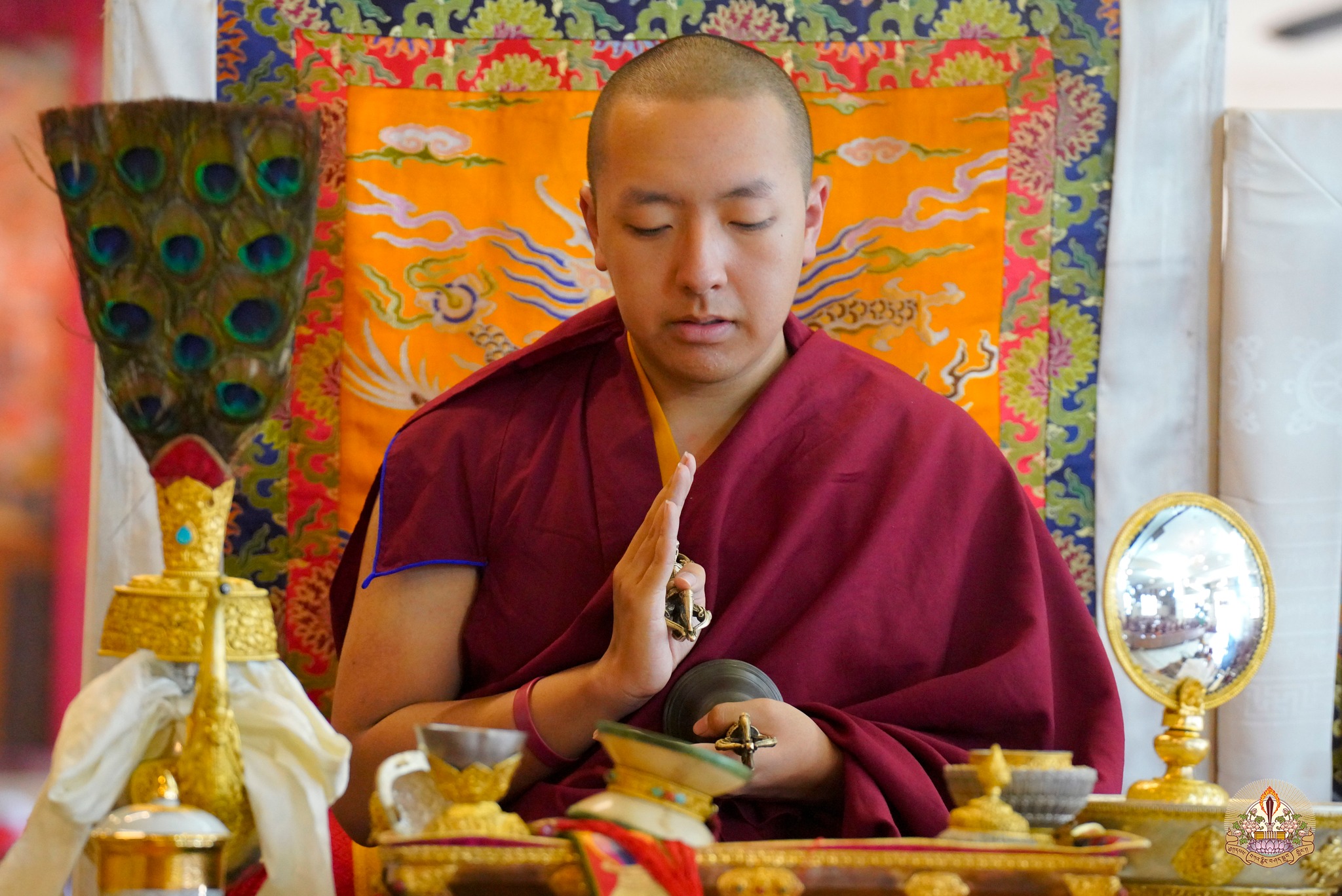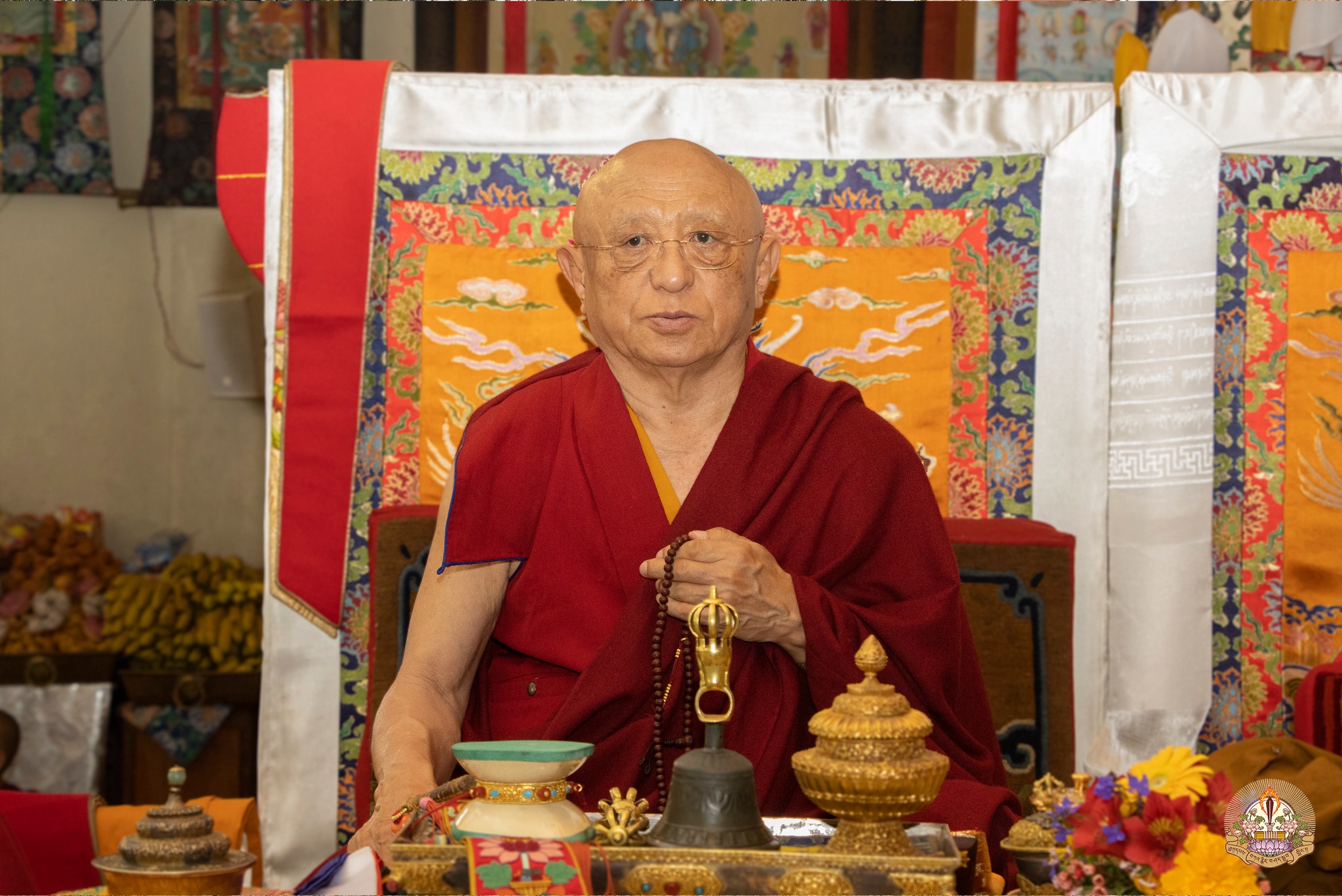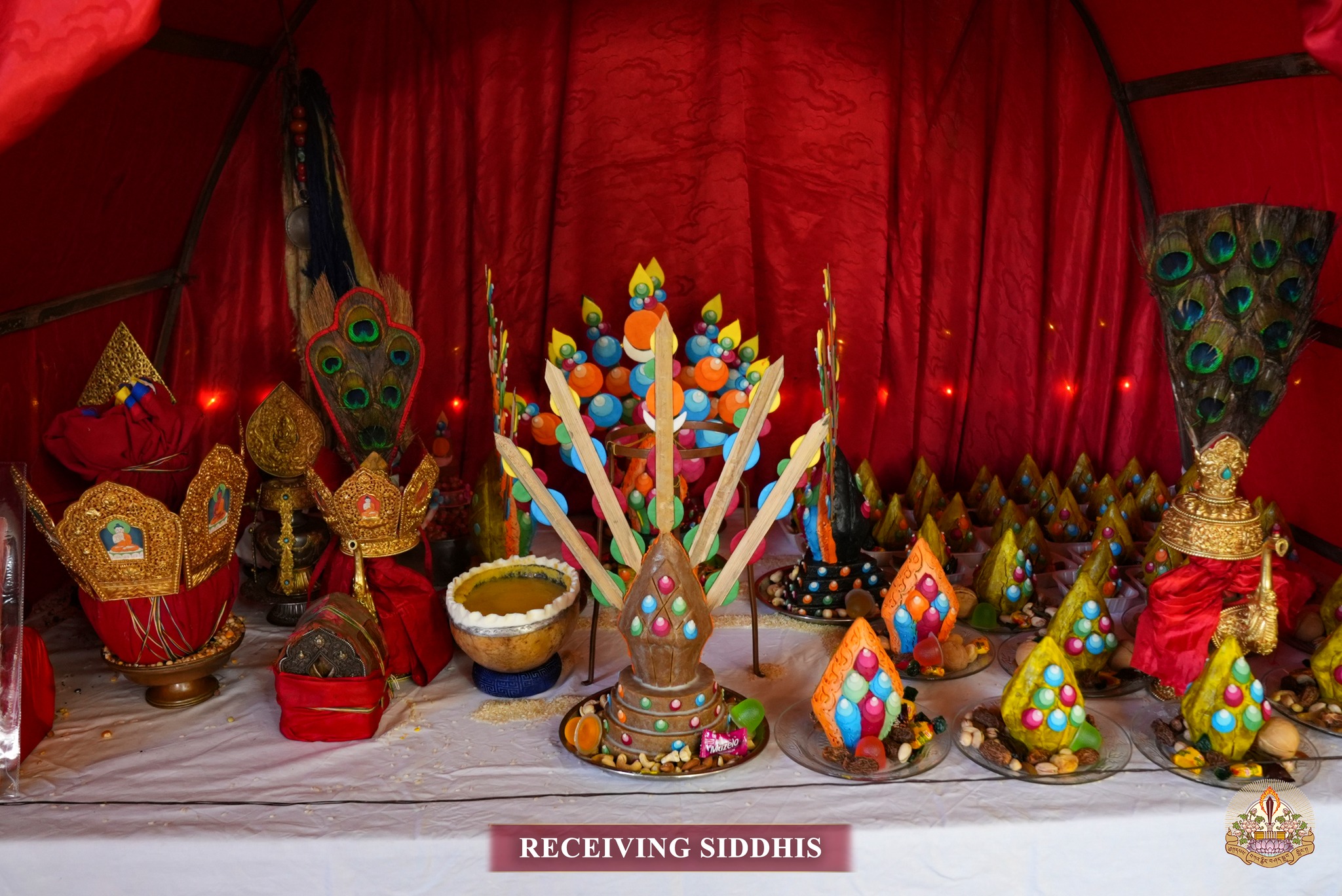The Ocean of Amṛita (Ngakso) Drubchen in Ka-Nying Shedrub Ling Monastery
The Ocean of Amṛita (Ngakso) Drubchen is performed each year by the monks of Ka-Nying Shedrub Ling Monastery on the 8th – 16th days of the 2nd month in the Tibetan calendar. In 2023, this falls on March 29th – April 6th. The Ngakso Drubchen was composed by the great terton, Chokgyur Dechen Lingpa and was later practiced by Tulku Urgyen Rinpoche (the great-grandson of Chokgyur Dechen Lingpa and father of H.E. Chökyi Nyima Rinpoche) and became one of the annual events at Ka-Nying Shedrub Ling monastery. This year Ngakso Drubchen is led by the precious teachers Chökyi Nyima Rinpoche, Urgyen Tulku Yangsi Rinpoche, and Pakchok Rinpoche.
The main purpose of the Ngakso Drubchen is to purify negative karma, restore broken samaya (spiritual commitments), and dispel obstacles – including those who have passed away. It is an intensive ritual where the practices and recitation of mantras are continued without interruption for 24 hours a day, for nine days. The monks take shifts to keep this ongoing. On the last day, the Drubchen concludes with the distribution of blessings and offerings (tsok) to all the monks, nuns, and lay people gathered at the monastery.
Day 1:
During the morning, Sang Puja and Wrathful Fire Puja are performed in two locations of the monastery. The Sang Puja is offered to the Three Jewels, deities, local spirits, and all sentient beings to gain their protection, while the Wrathful Fire Puja is performed to remove obstacles. Then the Bhumi (Land) Puja has been performed. Tormas are offered to the beings of the land to request permission to use the land. Tormas are also offered to the Four Kings of the Four Directions for the protection of all sentient beings during the puja. The monks circumambulate the monastery while they make this offering to the Four Kings. Additionally, a hole is made in front of the old Lhakhang to bury ritual materials, and a ritual dance is performed to signify that all obstacles have been buried. Finally, the image of god Yamantaka and some of the materials that represent him are hung at the monastery gate for protection. Then goes the Preparatory Ritual for the Deity. Vajrasattva prayers and mantras are recited for purification. The main deities of Thukdrub Barche Kunsel, all peaceful deities, and all wrathful deities are respectfully placed with great devotion. Next is the Implements of the Puja Preparation. All items necessary for the puja are prepared, including tormas, ritual instruments, food, medicine, tsok, and representation/shrine objects of body, speech, and mind. The day ends with the Preparation of the Practitioners. Practitioners are assigned different roles for the puja with a spiritual drink (amrita). Roles include Vajra Master, Chant Master, Discipline Master, and more.
Days 2 – 7:
The main puja is performed over the next 7 days. The only variation in the puja will be the type of fire puja performed.
During these 7 days of puja, the monks use many Mudras (such as Offering Mudras, Praise Mudras, Empowerment Mudras, and more). These are gestures of the body (mostly made with the hands) that represent the appearance of the Wisdom God in bodily form. Watching the performance of Mudras is beneficial because it provides a way to gain a profound knowledge of Dharmakaya, Mahakaruna, and Mahasunyata.
Days 8-9:
On 8th day the main puja is performed by Rinpoches, monks, and lay practitioners. Also, a group of monks performed the Magnetizing Fire Puja with the aspiration that all beings are happy, have independent minds, and gain success. This fire puja prepares the participants to obtain the siddhis on Day 9. The main point of the day is a Vajrakilaya Puja of the Drubchen, which begins one day before the beginning of the Drubchen and ends on Day 9 of the Drubchen. This puja removes the outer (all diseases), inner (negative emotions), and secret (concepts and thoughts) obstacles and gives protection during the Drubchen. On the 9th day of the Vajakilaya puja, Poisonous Weapon Torma used in the Vajrakilaya puja were thrown and burnt signifying throwing out all three types of obstacles of sentient beings and practitioners. After this ritual, the Siddhi of Vajrakilaya is received and given to the participants.
The cleansing ceremony and empowerment of the Drubchen are like this. The cleansing ceremony is a ritual for the purification of imperfections. It is performed every day by any one of Rinpoches by sprinkling water on icons, books, and stupas. It is very beneficial for purifying obscurations of the six realms accumulated through negative actions of the body, speech, and mind. Empowerment is an initiation process that introduces and permits one to participate in a particular Vajrayana practice. In the Drubchen, four types of empowerment are given:
The Vase (Kalasha) Empowerment: This is given by placing a sacred vase or Kalasha on the head of the recipients. It is believed that by receiving Kalasha empowerment, negative karma accumulated through negative actions of the body could be purified, and the recipients get permission to visualize the body of the specific empowerment deity. By regularly practicing this visualization, the practitioner can attain the manifest body of enlightenment, or nirmanakaya level of realization, of that particular deity.
The Secret Empowerment: This is received by drinking a sacred drink from a sacred Kapala. It is believed that by receiving Secret Empowerment, negative karma accumulated through negative actions of the speech could be purified, and the recipients get permission to recite the Mantras of the specific empowerment deity. By regular recitation, the practitioner can attain the enjoyment body of enlightenment, or sambhogakaya level of realization, of that particular deity.
The Transcendent Knowledge-Wisdom Empowerment: This is given by putting red-colored power on the recipients’ foreheads and a sacred mirror. It is believed that by receiving this Wisdom empowerment, negative karma accumulated through negative actions of the mind could be purified, and the recipients get permission to practice the fulfillment stage or perfection stage of the specific empowerment deity. By regular practice, the practitioner can attain the dharmakaya level of realization, of that particular deity.
This is given by showing a scared glass to the recipients. It is believed that by receiving this empowerment, negative karma accumulated through negative actions of the body, speech, and mind could be purified, and the recipients get permission to practice the nature of the mind. By regular practice, the practitioner can attain the essence body or the svabhavikakaya level of realization.







